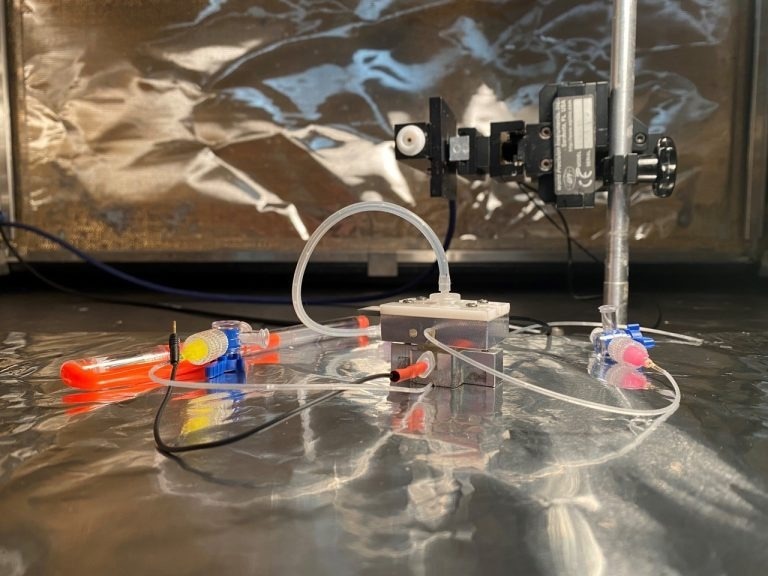
This silicon nitride nanopore-based sensing device is providing insight into tau and tubulin protein molecules behind Alzheimer’s and Parkinson’s diseases. Image Credit: Jiali Li.
Having been motivated by one of her doctoral students who wished to examine tubulin and tau proteins, Jiali Li, a physics professor at the University of Arkansas, made a unique silicon nitride nanopore-based sensing device.
In the Journal of Applied Physics, from AIP Publishing, Acharjee et al. presented a device that has been developed to offer volume information regarding tau and tubulin protein molecules and their aggregation states at the single-molecule level within their native surroundings.
For the sensor to be fabricated, the research group examined how the proteins tend to alter the current and voltage flowing via a nanopore system.
Ohm’s Law is the basic physics that enables the nanopore device to sense protein molecules. A tiny hole—from 6 to 30 nanometers—is made in a thin silicon nitride membrane and supported by a silicon substrate.
Jiali Li, Physics Professor, University of Arkansas
Li added, “When that is placed into a solution with salt ions, applying an electric voltage drives the ions’ flow through the hole, or nanopore. This, in turn, generates an open pore ionic current.”
When a charged protein molecule—repeatedly thousands of times bigger compared to the ions—is next to the nanopore, it gets guided into the nanopore and blocks the flow of a few ions. This makes the open pore current drop.
The amount of current drop produced by a protein molecule is proportional to the protein’s volume or size and shape. This implies that if protein A binds to protein B, they will cause a current drop proportional to the volume of A+B, and an aggregated protein A will cause approximately multiple amounts of current drop.
Jiali Li, Physics Professor, University of Arkansas
This enables Li and her group to watch the protein binding and aggregation within a nanopore device. The timespan where a protein stays in a nanopore has been inversely proportional to its charge, which also offers beneficial information regarding a protein molecule.
Our study shows that a silicon nitride nanopore device can measure volume information of tau and tubulin protein molecules and their aggregation under different biological conditions, and this gives us a better understanding of the protein aggregation process, as well as developing drugs or other therapeutic methods to treat neurodegenerative diseases.
Jiali Li, Physics Professor, University of Arkansas
Making use of their solid-state nanopore device, together with other nanotechnology tools, “we plan to study the mechanism of protein aggregation under different biological conditions systematically, such as temperature, pH, and salt concentration,” stated Li.
Journal Reference:
Acharjee, M. C., et al. (2022) Tau and tubulin protein aggregation characterization by solid-state nanopore method and atomic force microscopy. Journal of Applied Physics. doi.org/10.1063/5.0123688.